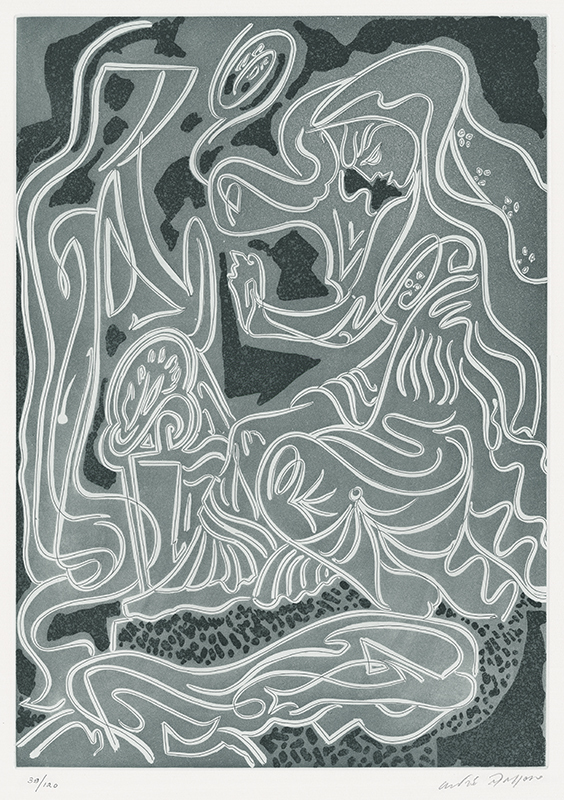
19th, 20th & 21st Century Fine Prints
707-546-7352 · fax 707-546-7924 · web: www.annexgalleries.com · email: artannex@aol.com
Penelope - Pl. II from the "L'Odyssee" portfolio by Andre Masson

Penelope - Pl. II from the "L'Odyssee" portfolio
Andre Masson
Penelope - Pl. II from the "L'Odyssee" portfolio
Andre Masson
1896 - 1987 (biography)Penelope is plate II of twelve plates from the portfolio L’Odysssée. published in 1978. Each plate is based upon Homer’s book, The Odyssey.
Penelope, the Queen of Ithaca and the wife of Odysseus, was the daughter of Icarius of Sparta and the nymph Periboea. During the twenty-year absence of Odysseus, beautiful Penelope remained faithful but found herself having to deflect the advances of numerous suitors. Certain that the King of Ithaca had died in the Trojan War, many men sought the status, wealth, and power of being married to Penelope and reigning over Ithaca. She never promised her hand and used her cunning to delay facing such a future. Penelope was known for her skill at weaving and she wove stories of equal complexity. The burial shroud for her father-in-law was on her loom and upon its completion she would make her choice known. In her deceptiveness, Penelope wove during the day and pulled out her work at night to begin again the next day. Masson represents a seated Penelope before her loom. Her right hand is raised to the tall male suitor. The garment at the feet of Penelope could be the ever-unfinished shroud.
Masson moved to Paris in 1912 to study at the École nationale supérieure des beaux-arts. While in Paris, he became interested in mythological-themed paintings of Nicolas Poussin, subjects that he would later treat in his own work. In 1915 he joined the French infantry and fought in the battles of the Somme. He was seriously wounded during a battle in 1917 and spent months in the hospital recovering physically and psychologically. The war influenced Masson’s art and he later wrote, “The field of battle made a human being of me. It literally threw me into the humus humain.”
In 1919, he moved to the south of France for a few years before returning to Paris. There he participated in the Surrealist movement between 1924 and 1929 and became a leading practitioner of automatism. Under the German occupation of France during World War II, Masson’s work was declared degenerate. He fled France eventually taking refuge in United States, first living in New York before moving to rural Connecticut in 1941. It was during this time that he worked at Stanley William Hayter’s experimental workshop Atelier 17 at the New School in New York.
Masson returned to France in 1945 and settled in Aix-en-Provence in 1947. He was awarded the Grand Prix National des Art in 1954 and, in 1958, the Venice Biennale dedicated an entire room to his work. As early as 1933 he produced designs for the stage and, in 1965, he was invited to paint the ceiling of the Théâtre de l'Odéon in Paris.
Andre Masson died on 28 October 28 1987 in Aix-en-Provence, France.


